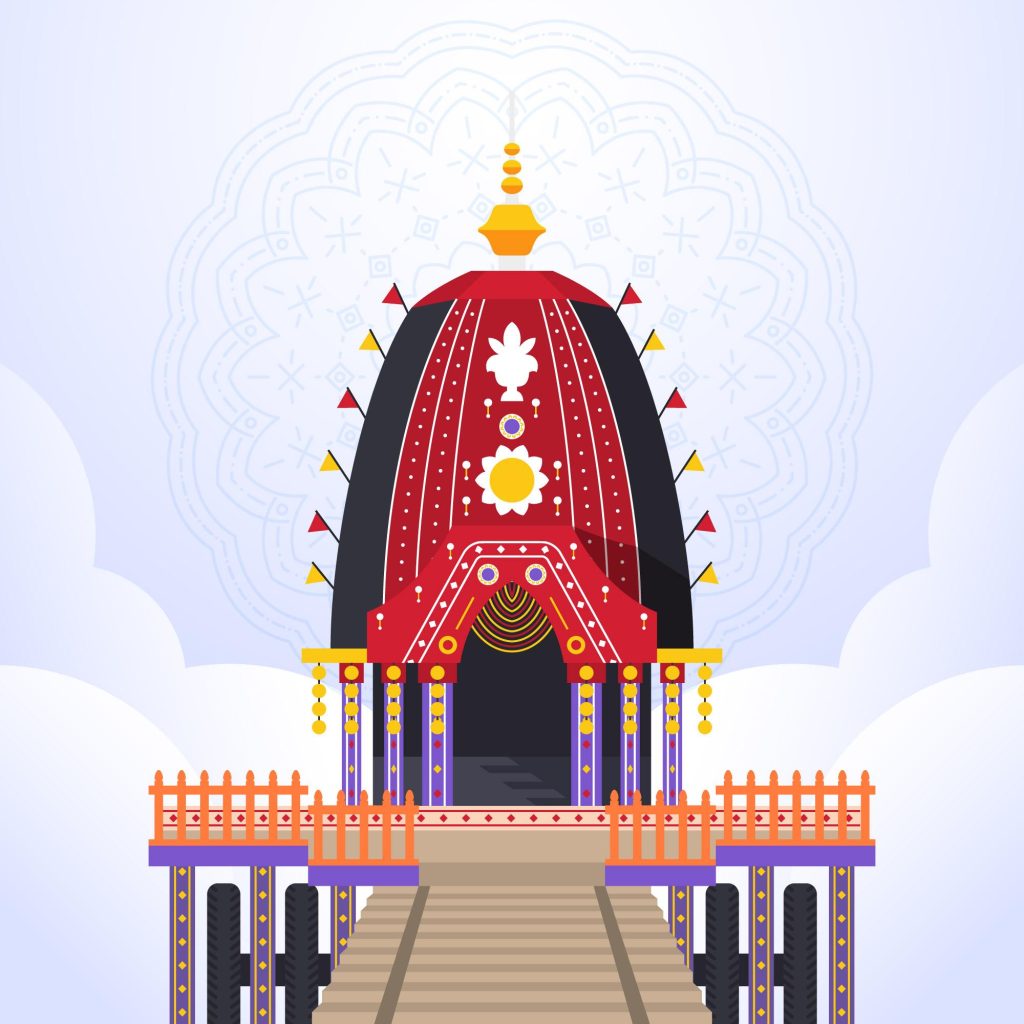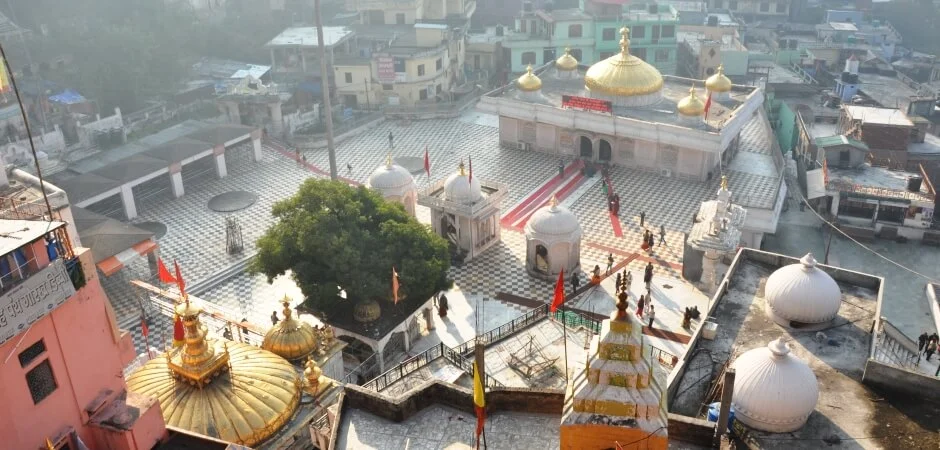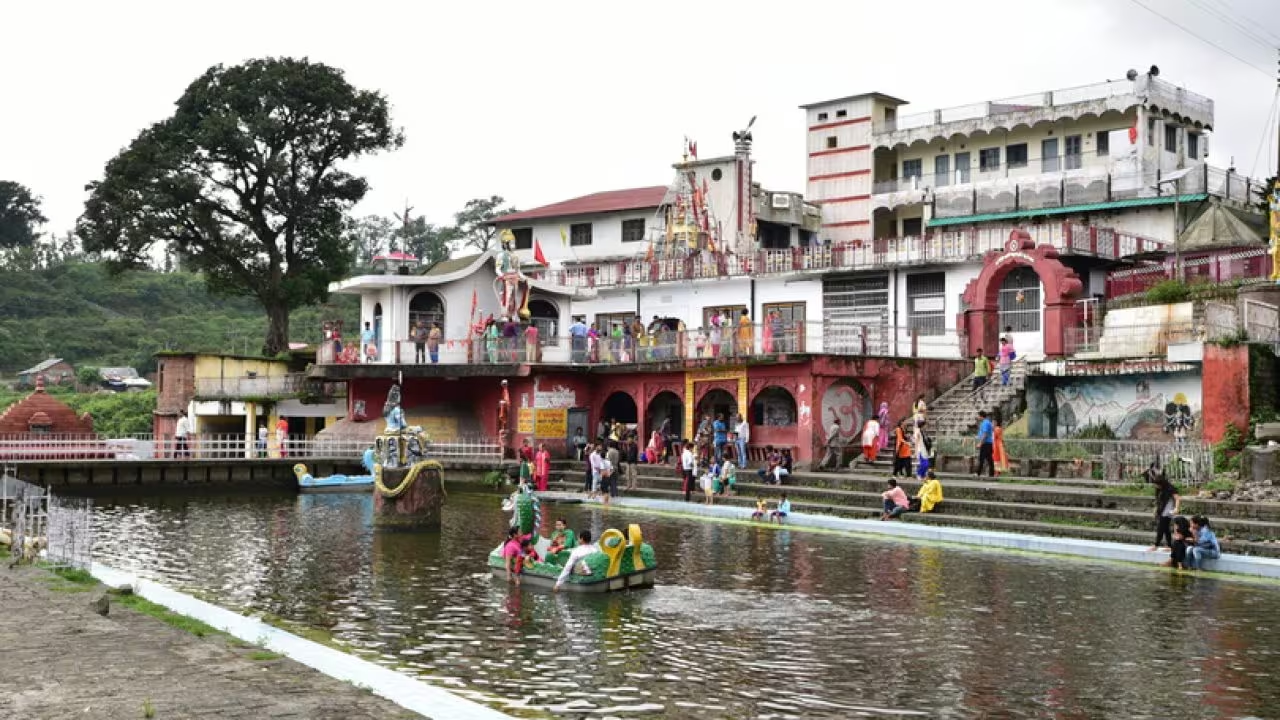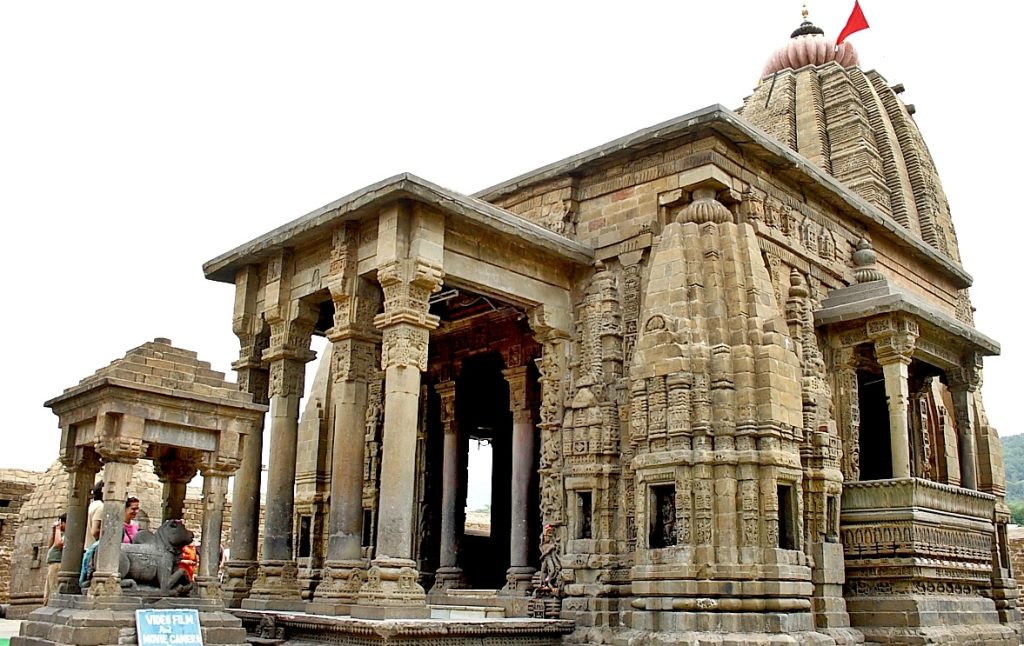Himachal Pradesh, often referred to as the “Land of the Gods,” is home to some of the most ancient and revered temples in India. These sacred sites, each with its own unique blend of history, spirituality, and architectural brilliance, offer a glimpse into the region’s rich cultural heritage. From the resilience of Bajreshwari Devi Temple to the mystical flame of Jwala Ji Temple, the serene Chamunda Devi Temple, the awe-inspiring Masroor Rock Cut Temple, and the historically significant Baijnath Temple, these temples serve as spiritual havens for pilgrims and history buffs alike.
In this blog, Discover the ancient temples of Himachal Pradesh, where history, spirituality, and stunning architecture converge. Explore the divine heritage of Bajreshwari, Jwala Ji, and more. Join us as we journey through the divine and historical treasures of Himachal Pradesh.

1. Bajreshwari Devi Temple
Bajreshwari Devi Temple or Baj Thank Vairay Wali, also known as Kangra Vala Mandir (Hindi: कांगड), is among the Nau Chandi Mata Ke Bhawan, one of most honoring and reverent in the Hill-Valley cantt area Dharamshala is some 40 km away from district Hamirpur The Jwalaji temple was built by former king Sanscerrit maharaja Nitish kumar Katoch King. This temple is dedicated to the Fairy Vajreshwari, which means The Lady of Lightning in Sanskrit, and involves Goddess Durga within form. It’s like a pilgrimage along with pilgrims flocking right here in large numbers annually.
Historical Significance
Bajreshwari Devi Temple: This temple states a historical aura that is associated with old times. In legends of the day, it is said that Pandavas constructed this temple in their exile. More than a millennium later, the temple was brutally sacked by Mahmud of Ghazni in the 11th century and rendered poorer. Despite the ruins, the temple has been rebuilt and restored many times in history; it is a true testament of dedication.
Location: Kangra Town
Importance: This ancient temple is different from other temples of Vaishno Devi as it is dedicated to Goddess Vajreshwari, a form of Durga. It is said to be constructed by the Pandavas and was rebuilt after it faced several invasions and natural disasters.
Fairs: The temple organizes a grand fair on the eve of Makar Sankranti, where thousands of devotees arrive.

2. Jwala Ji Temple
One of the most sacred and rare temples in Kangra, Himachal Pradesh is the Jwala Ji Temple or Jawalamukhi Temple. The idol at this ancient temple is that of Jwala ji, the deity dedicated to eternal flame and has historical importance in Hindu myths.
Historical Significance
The Jwala Ji Temple has ancient historical references found in many texts and scriptures. Legend has it that this temple was constructed (reconstructed) by Raja Bhumi Chand Katoch of Kangra after experiencing the divine fire at all other locations. The temple bears testimony to the indomitable faith of its followers in spite of various invasions and natural disasters.
Location: Jawalamukhi
Overview: Jwala Ji Temple is a well known temple in Himachal Pradesh and it is recognized for the sacred flame that burns continuously. Here, unlike most temples where there is an idol for worship, the flame itself is considered to be a god.
Festivals: Navratri is celebrated with much pomp and gaiety, attracting pilgrims from other parts of the country.

3. Chamunda Devi Temple
The Chamunda Devi Temple is situated in the picturesque site of Palampur, which was once a part of Jalandhara Division in the 19th Century. This temple serves as a sanctuary to the goddess and is an important pilgrimage destination that draws devotees who come looking for her blessings.
Historical Significance
Chamunda Devi Temple is one of the main temples in Hindu mythology and history. Dating back to 700 years old, this temple has been the site of worship for centuries. There is a story that the temple was founded by some local king after he saw in his dream about an idol of goddess at this place. The temple has been renovated and maintained over the years by different rulers, devotees.
Location: Chamunda
Significance: The chamunda devi temple is one of the most sacred temples devoted to chamunda ji, a fierce element of Durga Mata. It Rests On The Banks Of River Baner And A View Can Be Taken From The Dhauladhar Range.
Festivals: Durga Pooja (Navratri Puja, Dasara)- celebrated in honor of Goddess Shakti among the villagers
4. Masroor Rock Cut Temple
Masroor Rock Cut Temple or Masroor Temples is an important archaeological site and also a major monument situated near the village of Masroor in Kangra Valley, Himachal Pradesh. Its rock-cut architecture is dedicated to Shiva, and has likened the approving level of those at Ellora.
Historical Significance
There are many rock-cut temples that were built between the 8th and 10 centuries by the Katoch dynasty in Masroor. Rock-cut architecture of northern indiaOne of the best examples a rock cut temple in North India, Built with elements of an earlier cathedral, this plaza and the cluster of buildings surrounding it (notably a fourth-century church) have been at the religious heart of Lisbon for centuries — manifest in their style much like iconography throughout.
Location: Masroor
Importance: This religious facility adulation to Lord Shiva is like a remarkable cave temple complex. From the amazingly detailed carvings and massive structures, one could compare this place to some of those made out from caves like Ellora or Ajanta!
Festivals: Maha Shivaratri is a major festival celebrated with particular rituals and prayers at this temple.

5. Baijnath Temple
The Baijnath Temple is a well-known ancient Hindu temple in the town of Baijnath, located on the oldest ridges of land surrounded by Snowy Mountains; also known as Gorgeous Himachal Pradesh Famous Historical Heritage Place and Center attraction Point. Architectural beauty and historical importance are among the past but it is a large pilgrimage site in the country or is part of heritage.
Historical Significance
Baijnath Temple is considered to be an early medieval temple that was built sometime in the 8th century during the Katoch dynasty period. The temple is one of the oldest and largest temples in honor of Lord Shiva. The well-maintained structures and some inscriptions discovered in the environs of Khidrapur affirm its importance through many centuries.
Location: Baijnath
Speciality: This temple is distinguished by its Nagara style of architecture and this sacred place, much dedicated to Lord Shiva in the aspect of the world famous Jagatpur Vaidyanath motif. They have heard that a trip to this temple can cure diseases.
Major Festivals: Maha Shivaratri, Makar Sankranti
Conclusion
These ancient temples in Himachal Pradesh, each with its own unique history and significance, form a sacred tapestry that reflects the region’s deep spiritual heritage. From the Bajreshwari Devi Temple’s resilience through centuries of invasions to the Jwala Ji Temple’s eternal flame, these sites are not just places of worship but also living monuments of faith and devotion.
The Chamunda Devi Temple, with its breathtaking location and storied past, and the Masroor Rock Cut Temple, an architectural marvel, further add to the mystical allure of this region. Lastly, the Baijnath Temple, with its rich history and Nagara-style architecture, stands as a testament to the enduring legacy of Lord Shiva worship in India. Together, these temples invite pilgrims and history enthusiasts alike to explore the divine and cultural richness that Himachal Pradesh has to offer.


